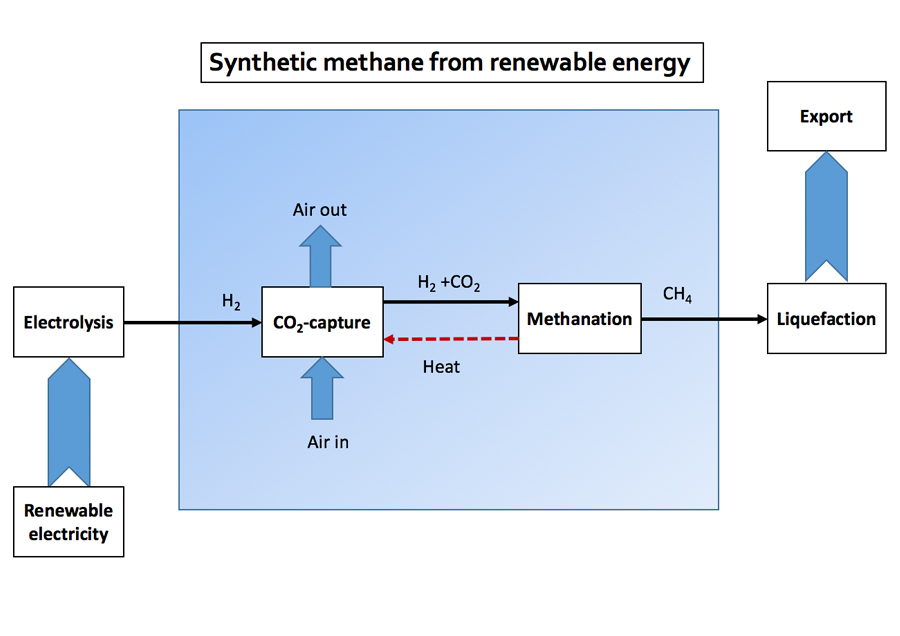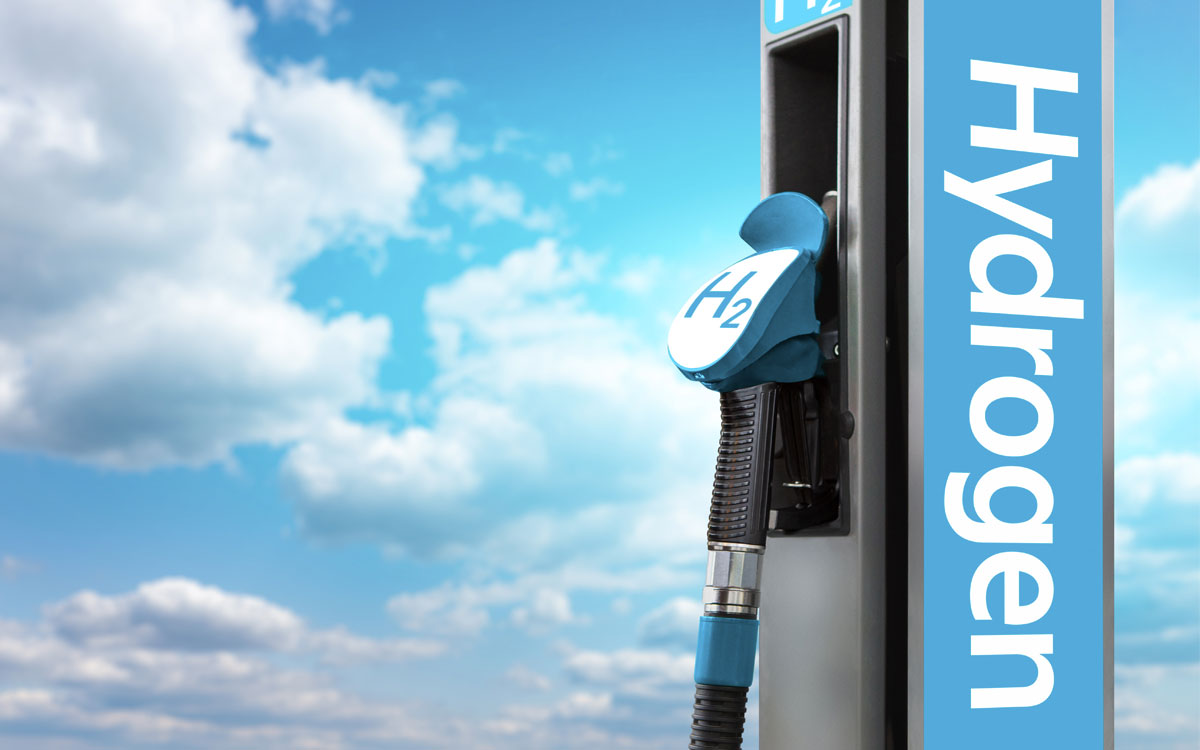Summary
The Methane Fuel Carrier Research and Development project will investigate the production of synthetic methane as a readily exportable, renewable fuel, derived from atmospheric carbon dioxide and hydrogen produced from renewable sources.
Key results
The project has concluded that:
- Direct air capture using amino-acid salt solutions is feasible
- Direct air capture using liquid absorbents in cooling towers is advantageous
- Methanation processes provide significant heat input to the liquid absorbent regeneration process.
Overall the export of renewable energy as liquified synthetic membrane appears as attractive as the export of liquified hydrogen.
Learn more
How the project works
Carbon dioxide is recovered from ambient air using a liquid absorbent based process that requires heat for the release of carbon dioxide. This heat can be conveniently recovered from the methanation process that converts carbon dioxide and hydrogen into methane. The project will focus on the technology for efficient recovery of carbon dioxide from air and the integration of this process with methane production process.
Area of innovation
The Methane Fuel Carrier Research and Development project will develop liquid absorbent based technologies that recover carbon dioxide from the low concentration levels present in ambient air. This will require innovations in the liquid reagents for carbon dioxide and the gas/liquid contacting devices. Next, the carbon dioxide recovery process will need to be optimally integrated with the methanation process that produces methane from carbon dioxide and hydrogen. This represents a second area of innovation.
Benefit
The technology development in this project aims to convert hydrogen produced from renewable electricity into a methane product that seamlessly fits in with existing energy export chains and available infrastructure. The carbon source for the process is derived from atmospheric carbon dioxide and is also renewable. A fuel export chain based on liquefaction of renewable methane promises an average efficiency improvement of 100% in comparison to an export chain based on hydrogen liquefaction.









